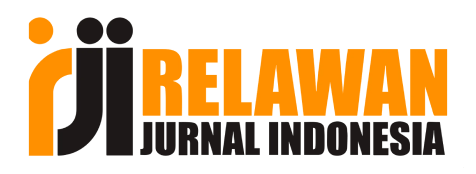Trust as a Mediator between Export Commitment and Competitive Advantage on Export SME Performance
DOI:
https://doi.org/10.38035/dijms.v6i2.2826Keywords:
Competitive Advantage, Commitment, Trust, SMEs Export PerformanceAbstract
Research was carried out to create sustainability of SMEs in the export sector through superior topics in the field of innovation and entrepreneurship with the sub-sector of Micro, Small and Medium Enterprises, abbreviated as UMKM. Important characteristics analytically and experimentally. This research examines the role of Trust as a mediator between Export Commitment and competitive advantage on the performance of Small and Medium Enterprises conducting export businesses in Indonesia. The main phenomenon in this research is the involvement of MSMEs in the supply chain, which is still very minimal, only reaching 6.3 percent in the global value chain in Southeast Asia, far behind Malaysia (46.2%), Thailand (29.6%), the Philippines (20.1%) and Vietnam 21.4%. For national exports, SMEs in Indonesia have only reached 14 percent, far from the government's target of 17 percent. In accordance with the Mercubuana University Research Master Plan for the period 2021 – 2024. The research begins with measuring the Level of Technology Readiness at level 3 with proof-of-concept criteria. Proof of concept, this research has a research objective and developing concepts, especially those related to competitive advantage, commitment and trust, which can improve the performance of Small and Medium Enterprises in the export sector in Indonesia. The research method that uses a quantitative approach with the SEM-PLS data analysis method is considered appropriate. The choice of the SEM- PLS method, because this research is predictive, will of course be able to represent the research model better. This research used 84 respondents from 88 returned questionnaires. The research results of export commitment and trust on the performance of export SMEs have a positive and insignificant effect, competitive advantage on the performance of export SMEs has a significant positive effect.
References
Ahamed, J. (2016). Competitive intensity as a moderator of trust–commitment relationships and of their linkages with export performanc.
Barney, J. (1991). Firm Resources and Sustained Competitive Advantage. Journal of Management, 17(1), 99–120. https://doi.org/10.1177/014920639101700108
Barney, J. B., & Hansen, M. H. (1994). Trustworthiness as a Source of Competitive Advantage.Strategic Management Journal, 15(1 S), 175–190. https://doi.org/10.1002/smj.4250150912
Bloemer, J., Pluymaekers, M., & Odekerken, A. (2013). Trust and affective commitment as energizing forces for export performance. International Business Review, 22(2), 363–380. https://doi.org/10.1016/j.ibusrev.2012.05.002
Boso, N., Cadogan, J. W., & Story, V. M. (2012). Complementary effect of entrepreneurial and market orientations on export new product success under differing levels of competitive intensity and financial capital. International Business Review, 21(4), 667–681. https://doi.org/10.1016/j.ibusrev.2011.07.009
Cavusgil, S. T., & Zou, S. (1994). Marketing Strategy-Performance Relationship: An Investigation of the Empirical Link in Export Market Ventures. Journal of Marketing, 58(1), 1. https://doi.org/10.2307/1252247
Diaz, E., Martin-Consuegra, D., & Esteban, Á. (2015). Perceptions of service cannibalisation: The moderating effect of the type of travel agency. Tourism Management, 48, 329–342.
Faroque, A. R., Kuivalainen, O., Ahmed, J. U., Rahman, M., Roy, H., Ali, M. Y., & Mostafiz, M. I. (2021). Performance implications of export assistance: the mediating role of export entrepreneurship. International Marketing Review, 38(6), 1370–1399. https://doi.org/10.1108/IMR-07-2020-0141
Farouque, T. (2015). Export marketing assistance and early internationalizing firm performance Does export commitment matter. Asia Pacific Journal of Marketing and Logistics.
Ferreira, J., Coelho, A., & Moutinho, L. (2020). Dynamic capabilities, creativity and innovation capability and their impact on competitive advantage and firm performance: The moderating role of entrepreneurial orientation. Technovation, 92–93(February 2017), 0–1. https://doi.org/10.1016/j.technovation.2018.11.004
Gereffi, G., Humphrey, J., & Sturgeon, T. (2005). The governance of global value chains. Review of International Political Economy, 12(1), 78–104. https://doi.org/10.1080/09692290500049805
Ghemawat, Gap, E., Hypothesis, G., History, E., States, U., & Grail, H. (1991). Commitment : The Dynamic of Strategy. 616–618.
Good, M. C., & Hyman, M. R. (2020). ‘Fear of missing out’: antecedents and influence on purchase likelihood. Journal of Marketing Theory and Practice, 28(3), 330–341.
Gupta, S., & Shrivastava, M. (2021). Herding and loss aversion in stock markets: mediating role of fear of missing out (FOMO) in retail investors. International Journal of Emerging Markets.
Hair Jr, J. F., Hult, G. T. M., Ringle, C. M., & Sarstedt, M. (2021). A primer on partial least squares structural equation modeling (PLS-SEM). Sage publications.
Herath, H. M. A., & Mahmood, R. (2017). Strategic orientations and SME performance: Moderating effect of absorptive capacity of the firm. Asian Social Science, 10(13), 95–107. https://doi.org/10.5539/ass.v10n13p95
Hunt, R. M. M. and S. D. (1994). The Commitment-Trust Theory of Relationship Marketing. Journal of Economic Theory, 58(3), 20–38. https://doi.org/10.1016/0022-0531(82)90041-2
Imran, M., Aziz, A., & Abdul Hamid, S. N. (2017). Determinants of SME export performance. International Journal of Data and Network Science, 1(2017), 39–58. https://doi.org/10.5267/j.ijdns.2017.1.007
Ismail, M. D., Alam, S. S., & Hamid, R. bt A. (2017). Trust, commitment, and competitive advantage in export performance of SMEs. Gadjah Mada International Journal of Business, 19(1), 1–18. https://doi.org/10.22146/gamaijb.22680
Kaleka, A., & Morgan, N. A. (2017). Which competitive advantage (s)? Competitive advantage- market performance relationships in international markets. Journal of International Marketing, 25(4), 25–49. https://doi.org/10.1509/jim.16.0058
Lee, C. W. (2007). Strategic alliances influence on small and medium firm performance. Journal of Business Research, 60(7), 731–741. https://doi.org/10.1016/j.jbusres.2007.02.018
Leonidou, L. C., Katsikeas, C. S., & Hadjimarcou, J. (2002). Executive insights: Building successful export business relationships: A behavioral perspective. Journal of International Marketing, 10(3), 96–115. https://doi.org/10.1509/jimk.10.3.96.19543
Mann, L., Kirkegaard, J. F., & Cooper, R. N. (2006). Accelerating the Globalization of America: The Role for Information Technology. 85(6), 161–162.
Navarro, A., Losada, F., Ruzo, E., & Díez, J. A. (2010). Implications of perceived competitive advantages, adaptation of marketing tactics and export commitment on export performance. Journal of World Business, 45(1), 49–58. https://doi.org/10.1016/j.jwb.2009.04.004
Nes, E. B., Solberg, C. A., & Silkoset, R. (2007). The impact of national culture and communication on exporter-distributor relations and on export performance. International Business Review, 16(4), 405–424. https://doi.org/10.1016/j.ibusrev.2007.01.008
Obashi, A., & Kimura, F. (2016). The Role of China, Japan, and Korea in Machinery Production Networks. International Economic Journal, 30(2), 169–190. https://doi.org/10.1080/10168737.2016.1148398
Pol Antras, E. H. (2004). Global Sourcing. 112(3), 552–580.
Porters, M. E. (1991). The Competitive Advantage of Nations. Journal of Management, 17(1), 213–215. https://doi.org/10.1177/014920639101700113
Purwanto, S., Setiawan, M., Rohman, F., & Indrawati, N. K. (2018). Financial assistance, marketing assistance and export commitment to improve export performance. European Research Studies Journal, 21(4), 69–91. https://doi.org/10.35808/ersj/1104
Rashid, M. Z. A., Sambasivan, M., & Johari, J. (2003). The influence of corporate culture and organisational commitment on performance. Journal of Management Development, 22(7–8), 708–728. https://doi.org/10.1108/02621710310487873/FULL/XML
Rotsios, K. P., Sklavounos, N. S., & Hajidimitriou, Y. A. (2014). Trust, Knowledge Transfer and Control in IJVs: The Case of Four Greek Firms. Procedia Economics and Finance, 9(Ebeec 2013), 231–241. https://doi.org/10.1016/s2212-5671(14)00024-0
Sekaran Uma, B. R. (2013). Research Methods for Business: A Skill-Building Approach. In Leadership & Organization Development Journal (Vol. 34, Issue 7). https://doi.org/10.1108/lodj-06-2013-0079
Seringhaus F.H. Rolf. (1986). The Impact of Government. International Market Review, 71–75. https://doi.org/10.1007/978-1-349-01218-3_10
Solberg, C. A., & Nes, E. B. (2002). Exporter trust, commitment and marketing control in integrated and independent export channels. International Business Review, 11(4), 385–405. https://doi.org/10.1016/S0969-5931(02)00016-1
Somers, M. J., & Birnbaum, D. (1998). Work-related commitment and job performance: It’s also the nature of the performance that counts. Journal of Organizational Behavior, 19(6), 621–634. https://doi.org/10.1002/(SICI)1099-1379(1998110)19:6<621::AID-JOB853>3.0.CO;2-B
Sudirman. (2021). IMPLEMENTATION OF KNOWLEDGE MANAGEMENT TO ( STUDY VISIT AT AIDA FURNITURE , PASURUAN ). 311–318.
Taherdoost, H. (2018). Sampling Methods in Research Methodology; How to Choose a Sampling Technique for Research. SSRN Electronic Journal, 5(2), 18–27. https://doi.org/10.2139/ssrn.3205035
Tang, T.-W., Zhang, P., Lu, Y., Wang, T.-C., & Tsai, C.-L. (2020). The effect of tourism core competence on entrepreneurial orientation and service innovation performance in tourism small and medium enterprises. Asia Pacific Journal of Tourism Research, 25(2), 89–100.
Teece, D. J., Gary, P., & Shuen, A. (1997). dynamic capabilities and strategic management. Strategic Management Journal, 63(1), 13–23. https://doi.org/10.1176/appi.psychotherapy.2009.63.1.13
Weerawardena, J., Mort, G. S., Liesch, P. W., & Knight, G. (2007). Conceptualizing accelerated internationalization in the born global firm: A dynamic capabilities perspective. Journal of World Business, 42(3), 294–306. https://doi.org/10.1016/j.jwb.2007.04.004
Wheelen, T. L., Hunger, J. D., Hoffman, A. N., & Bamford, C. E. (2017). Strategic management and business policy (Vol. 55). pearson Boston.
Wu, L., & Chiu, M.-L. (2018). Examining supply chain collaboration with determinants and performance impact: Social capital, justice, and technology use perspectives. International Journal of Information Management, 39, 5–19.
Zhang, Z., Cao, T., Shu, J., & Liu, H. (2022). Identifying key factors affecting college students’ adoption of the e-learning system in mandatory blended learning environments. Interactive Learning Environments, 30(8), 1388–1401.
Zou, S., Taylor, C. R., & Osland, G. E. (1998). The EXPERF Scale: A Cross-National Generalized Export Performance Measure. Journal of International Marketing, 6(3), 10. https://doi.org/10.1177/1069031X9800600304
Downloads
Published
How to Cite
Issue
Section
License
Copyright (c) 2024 Raharja Indra, Hamdan Hamdan

This work is licensed under a Creative Commons Attribution 4.0 International License.
Authors who publish their manuscripts in this journal agree to the following conditions:
- The copyright on each article belongs to the author(s).
- The author acknowledges that the Dinasti International Journal of Management Science (DIJMS) has the right to be the first to publish with a Creative Commons Attribution 4.0 International license (Attribution 4.0 International (CC BY 4.0).
- Authors can submit articles separately, arrange for the non-exclusive distribution of manuscripts that have been published in this journal into other versions (e.g., sent to the author's institutional repository, publication into books, etc.), by acknowledging that the manuscript has been published for the first time in the Dinasti International Journal of Management Science (DIJMS).
















































